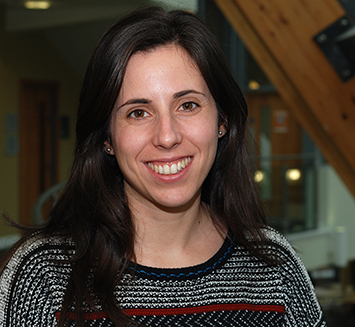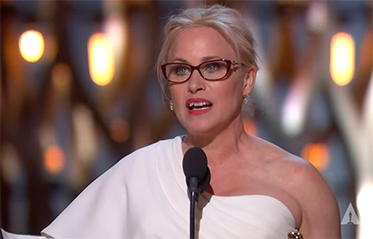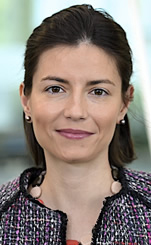Research uncovers extent of sexism in Hollywood’s male-female pay

Mon, 20 Feb 2017 13:43:00 GMT
“…star female actors earn on average $2 million less than men…”
 HOLLYWOOD actresses such as Jennifer Lawrence and Meryl Streep, campaigning to receive the same pay as their male co-stars, now have the facts and figures to support their stance, thanks to detailed research and sophisticated statistical analysis by a lecturer at the University of Huddersfield.
HOLLYWOOD actresses such as Jennifer Lawrence and Meryl Streep, campaigning to receive the same pay as their male co-stars, now have the facts and figures to support their stance, thanks to detailed research and sophisticated statistical analysis by a lecturer at the University of Huddersfield.
Dr Sofia Izquierdo-Sanchez (pictured left) is co-author of a new paper titled Hollywood’s Wage Structure and Discrimination. It shows that star female actors earn on average $2 million less than men.
This can partly be explained by factors such as male predominance in the action blockbusters that are the biggest money-spinners. But “sex segregation by movie genre” accounts for just 11 per cent of the male-female pay gap, according to the researchers.
They calculate that when all observable differences between male and female actors are accounted for, there is still a 55 per cent disparity, leading to a gender pay gap caused by Hollywood sexism, in the view of Dr Izquierdo-Sanchez and her fellow economist and co-author Dr Maria Navarro Paniagua, of Lancaster University.
“This unexplained gender compensation gap can be attributed to a taste for labour market discrimination against female actors,” they write.
Now – during the Oscar season – they plan to send their findings to the agents of top stars who have spoken out against the pay gap. At the 2015 Oscars, Patricia Arquette (pictured below right) used an acceptance speech to call for wage equality in Hollywood and Meryl Streep is outspoken on the issue. Despite her success, she still receives less than men, she has claimed.
 It was hearing an interview with Ms Streep that triggered Dr Izquierdo-Sanchez’s research. “We realised there was no complete academic paper that analysed the labour market in the film industry. We were surprised that nobody had done it before,” she said.
It was hearing an interview with Ms Streep that triggered Dr Izquierdo-Sanchez’s research. “We realised there was no complete academic paper that analysed the labour market in the film industry. We were surprised that nobody had done it before,” she said.
The new article includes the case study of the movie American Hustle: “Christian Bale worked 45 days for $2.5 million upfront and 9% of total profits, Bradley Cooper worked 46 days for $2.5 million and 9% of total profits, while Amy Adams worked 45 days – the same number of days as Christian Bale and just one day less than Bradley Cooper – and was paid $1.25 million and 7% of total profits.”
 Charlize Theron, Jennifer Lawrence and Natalie Portman among the other stars who have called for “equal pay for equal jobs” and they are among the names who will be supplied with the findings of Dr Izquierdo-Sanchez’s research.
Charlize Theron, Jennifer Lawrence and Natalie Portman among the other stars who have called for “equal pay for equal jobs” and they are among the names who will be supplied with the findings of Dr Izquierdo-Sanchez’s research.
In order carry out the analysis, covering 1980 to 2015, she and Dr Navarro Paniagua (pictured left) used sources including the International Movie Database (IMDb) and Box Office Mojo. Their sample consisted of 267 different actors – of which 38 per cent were female – formed into 1,344 male-female movie pairs.
The goal was to research various aspects of the economy and wage structures of Hollywood, with the gender pay gap being a key theme that emerged. The article has several tables and graphs and the authors deploy a range of advanced statistical methods. This culminates in the use of the Blinder-Oaxaca decomposition technique – a well-established formula for understanding wage differentials – in order to investigate the levels of discrimination against female actors.
The authors believe that their findings have social and economic implications that go beyond the world of highly-paid Hollywood superstars:
“First, the film industry is the largest of the creative industries in the US. Second, it is an industry with a substantial influence on consumer behaviour. The impact of this paper not only highlights the current issues regarding superstar payments but also, given the exposure of people to the film industry, the existence of this discrimination could lead to similar practises to be spread across other sectors.”
- Dr Izquierdo-Sanchez is Senior Lecturer in Economics in the Department of Accountancy, Finance and Economics at the University of Huddersfield’s Business School. She is also Deputy Director of the Research Centre for Productivity Improvement. Her fields of research have included the creative industries.







